Meet the sibling duo behind Singapore’s pioneering Halal-certified truffle brand
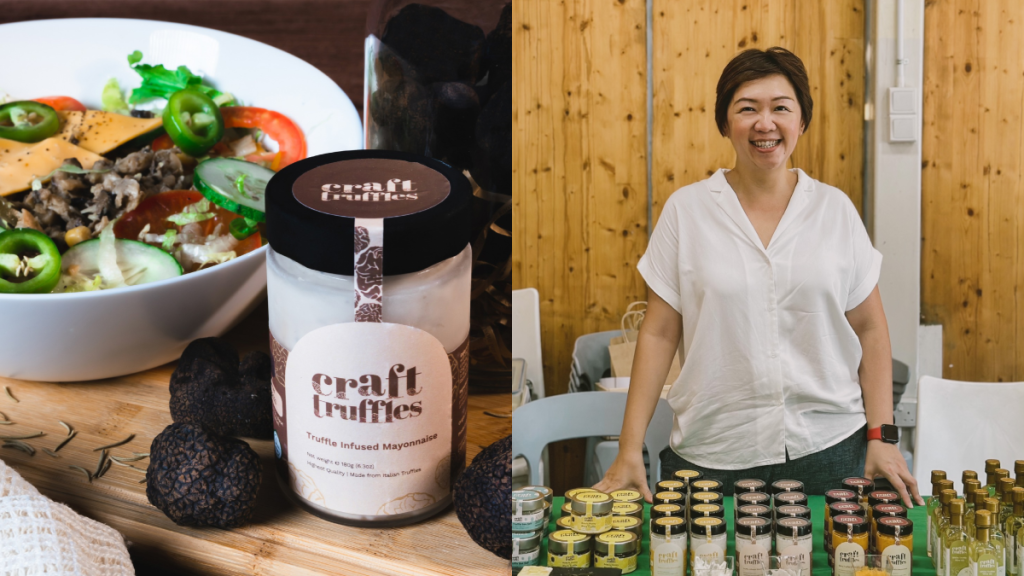
For as long as Celine Yeo could remember, her younger brother Kevin loves Italy. It is an essential inclusion in his travel plans, whether it be during his honeymoon or any other opportunity to explore the world.
In one of his trips back in 2015, Kevin decided to venture out of the big cities and usual tourist spots for a change. He set foot on Umbria, a region known to be the “green heart of Italy” for its hilly and natural landscape.
In Spoleto, an ancient city in east-central of Umbria, Kevin met Mirko, an Italian businessman and third-generation farm owner. As food lovers, the two bonded quickly over local wine and prosciutto. Mirko also showed hospitality by bringing Kevin to his farms and truffle hunting.
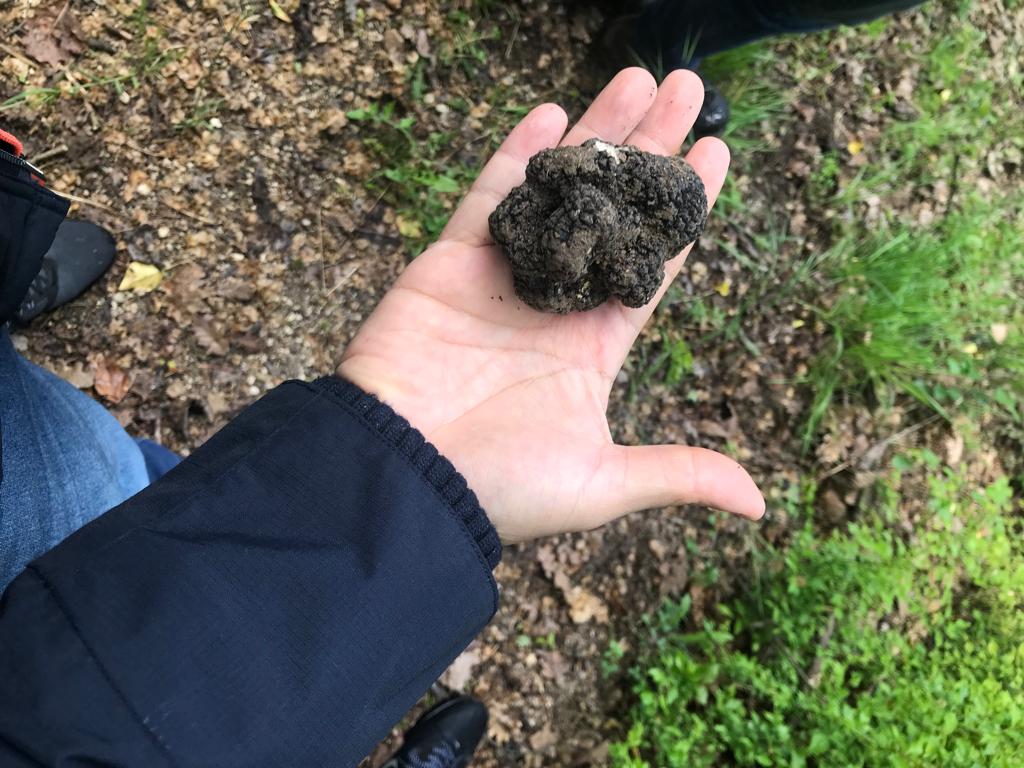
Kevin and Mirko kept in touch after the trip and before long, they were co-owning a truffle farm together. Kevin was interested to import and sell the harvested truffles from their farm to Singapore, but his full-time job in a logistic company did not grant him the luxury of time to manage a side business.
Pioneering a Halal-certified truffle brand in Singapore
Just as Kevin was on the verge of fully launching his truffle business in 2020, the unforeseen COVID-19 pandemic swept across the globe, forcing him to put his plans on hold once more. However, after a long wait, the opportune moment finally presented itself in October 2022, allowing Kevin to finally pursue his entrepreneurial aspirations with renewed determination.
With the help of his elder sister Celine, who took on the role as a sales and marketing director, Kevin founded Craft Truffles, a gourmet brand specialising in truffle-made condiments and food items.
Currently, Craft Truffles has nine products under its belt, including its signature truffle-infused mayonnaise, truffle oil, black truffle butter, and truffle with Acacia honey. All of them are manufactured in Italy with truffles that were freshly harvested from the farm that’s co-owned by Kevin and Mirko.
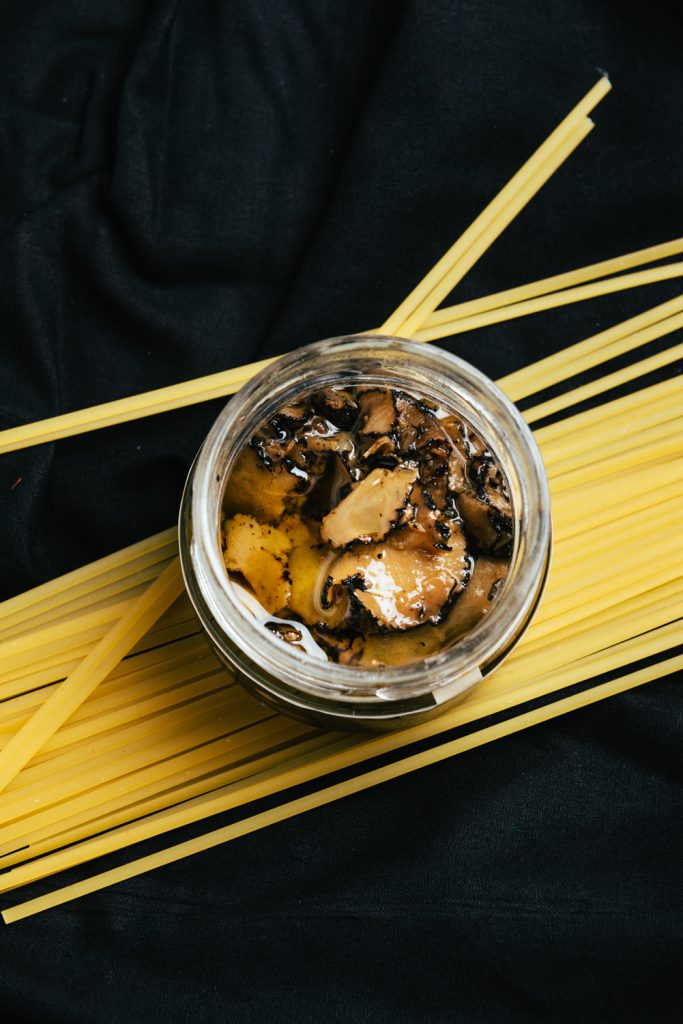
Celine noted that truffles have a short shelf life — they start to lose their flavour the moment they are picked, so importing them to Singapore would compromise their overall quality. Due to their delicate nature, truffles require immediate processing to preserve their exquisite flavour and quality.
On top of ascertaining freshness, Celine shared that co-owning a truffle farm in Italy allows Craft Truffles to keep its products affordable by eliminating intermediaries. Furthermore, this ownership guarantees a steady and reliable supply of truffles throughout the year.
Celine explained that wild truffles are often harvested with the assistance of highly skilled hogs or dogs, possessing an exceptional sense of smell that allows them to locate these prized delicacies growing deep underground.
Since farmed truffles does not involve animals, Craft Truffles is able to obtain Halal certification for all its products and bring them to a wider community. “We are trying to disrupt the market by bringing down the price point, granting accessibility, and offering different flavours,” Celine said.
Truffles is not the siblings’ first business venture
“We come from a family of foodies,” Celine said. “Our mother used to be a cook for British families in the 1960s, so our dinners are always filled with a variety of dishes. She would make English trifle alongside hotpot — I know it sounds odd, but this is the kind of environment that Kevin and I grew up in and how our passion for food were cultivated.”
Prior to their truffle business, the siblings had established a café named 3 Inch Sin, which specialises in chocolate lava cakes. This venture came to fruition after Celine completed her pastry diploma course at Le Corden Blue.
The café operated for about five years with two outlets in Singapore before it finally closed down in 2015.
After the closure of their café, the siblings returned to their respective trades in arts management and logistics. Nevertheless, the hiccup did not dampen the entrepreneurial spirit of Kevin, who is regarded as the more business savvy one out of the duo.
“We accumulated some valuable experiences after running 3 Inch Sin for five years,” Celine said. “But selling truffle products virtually is very different from running a physical cafe, so I was a little on the fence when Kevin approached me with the idea of setting up Craft Truffles together.”
Celine believes that the e-commerce market is saturated with numerous competitors, providing consumers with the option to directly purchase from overseas suppliers. Consequently, she acknowledges that gaining visibility and attracting potential customers for Craft Truffles will be a significant challenge for her and Kevin.
Given these circumstances, Celine finds herself uncertain about whether Craft Truffles can truly distinguish itself from the competition and achieve success in this crowded marketplace.
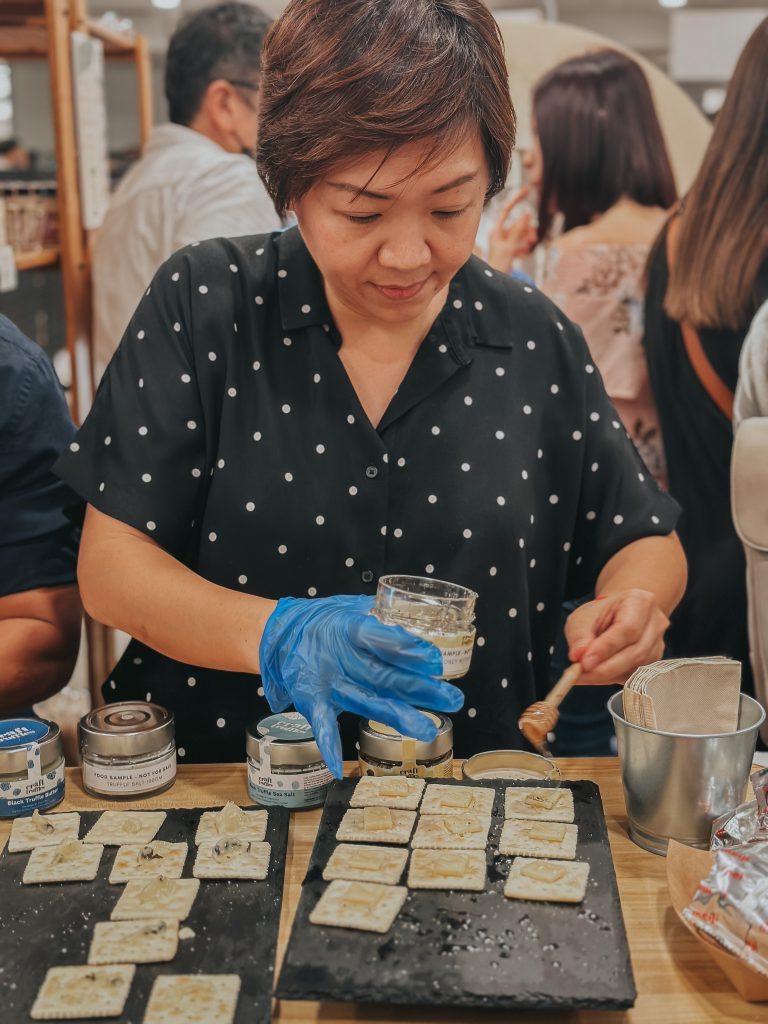
After carefully analysing the market gaps and not wanting to dampen her brother’s enthusiasm, Celine reached a decision to join Kevin once more in their entrepreneurial pursuit, but with one condition.
“I told Kevin, if you want me to help you, you must agree that we will never argue over the business and hold a grudge against each other,” Celine said. “At the end of the day, whether the business works or not, blood is always thicker than water. I don’t want our relationship to turn sour over any decisions we make.”
Celine expresses her satisfaction with the dynamic between her and Kevin thus far. They have effectively divided their responsibilities based on their individual skillsets and expertise. Kevin takes charge of the management and operational aspects, while Celine, with her creative flair, focuses on packaging and brand building, ensuring a well-rounded approach to their business.
“An advantage of setting up a business with a family member is the level of trust and shared vision that we already have when we come onboard,” Celine disclosed. “I never questioned Kevin’s goal of wanting to become Singapore’s truffle specialist. Likewise, Kevin never resists when I share my perspective with him. It’s this frankness that helps to move a lot of things forward.”
Still, there were times when their close kinship backfires. Celine recalled the first day she entered Craft Truffles’ office. Although Kevin has set aside a space for Celine to work, he did not equip it with anything apart from a table and chair. “Looking at the empty table, I asked Kevin, where are the rest? Don’t you think I need some stationery?” Celine said.
“Kevin’s reply was he thought I have already gotten them on my own. Both of us ended up laughing hard at the assumptions we made. I think because we are so close that Kevin failed to realise, he was welcoming a staff member, and not his elder sister, onboard.”
Managing cultural differences and expectations
In addition to managing their own expectations, the siblings also need to handle the expectations of their Italian counterparts. Celine noted that all along, Italians consume truffles in its natural form and to them, its taste has always been subtle.
Italians are not familiar with the truffle-infused products that Singaporeans are used to, which are mostly stronger in taste and smell. As all Craft Truffles’ products are made in Italy, sometimes, it can be difficult to explain and request its Italian manufacturer to calibrate the taste of the truffle products that matches the expectations of Singaporeans.
“Italians are extremely proud of their heritage and food,” Celine observed. “They would not hesitate to refuse when they know you are altering something that they have acquainted with, even if you are doing it to meet the market’s needs.”
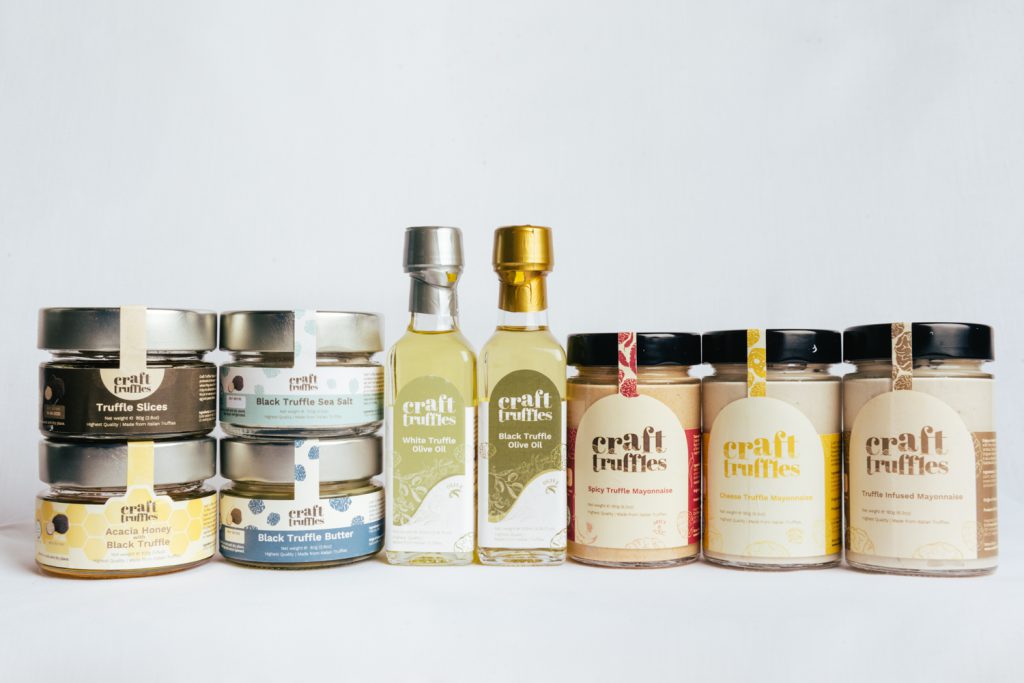
Despite this, nothing is holding back the siblings from pushing the boundaries. Craft Truffles is planning to expand its product range to 15 by the third quarter of this year as the siblings believe there are still many gaps in the truffle retail market waiting to be filled.
“We noticed most players are bringing in similar products and consumers’ understanding of truffles may be limited to truffles fries and pasta,” Celine continued.
“So we have been putting up recipes on our website to inform consumers the many ways of cooking with truffles. We also wanted to widen our selection by introducing a range of ready-to-eat products, so more people can enjoy truffles at their convenience without having to pay a premium.”
Featured Image Credit: Craft Truffles
Also Read: Meet Jayina Chan: The mumpreneur behind Anya Meals, S’pore’s pioneering halal baby food brand
AirPods from $9/mth: S’pore startup Circular reshapes tech ownership with flexible subscriptions
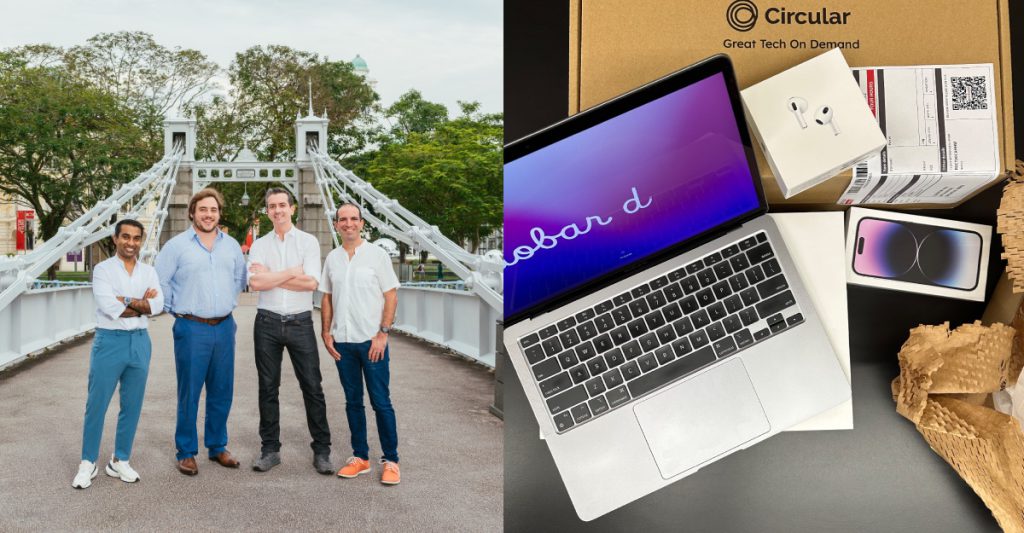
It’s a common phenomenon among Singaporeans to find themselves caught up in the cycle of constantly upgrading and replacing their electronic devices. Even when our existing devices are perfectly functional, we can’t help but be enticed by the latest gadget releases.
And if I’m being honest, I’m guilty of falling into this pattern as well — the allure of shiny, new gadgets has often led me to change my mobile phone every two years.
Although it may appear insignificant at first glance, the seemingly harmless trend of constantly upgrading and replacing our electronic devices actually carries devastating consequences. The consumer electronics we leave behind often end up forgotten, stashed away in drawers or closets, collecting dust.
Not only does this underutilisation result in a significant waste of resources, but it also contributes to the electronic waste (e-waste). In fact, Singapore generates about 60,000 tonnes of e-waste annually, which equates to a whopping 70 devices per person.
Recognising the urgency of the situation, four industry veterans — namely Nick Ramsay, Pantha Roy, George Oliver, and Yaniv Bernstein — took matters into their own hands with the launch of Circular.
Promoting a “circular” economy in Asia

Circular is a startup that aims to address the environmental impacts of the e-waste generation through a subscription-based marketplace for consumer electronics in Asia.
The platform was launched in February last year, and aims to promote a “circular” economy — which is where the name Circular comes from — eliminating waste and maximising the use of resources.
By keeping products in use for longer and precious materials out of landfill, we hope to gradually shift patterns of consumption.
– Nick Ramsay, CEO and co-founder of Circular

The founders of Circular each come from very different backgrounds. Nick was formerly the COO, CTO and CPO at MoneySmart Group, Pantha has held senior leadership roles at companies including Circles.Life and honestbee, George has held senior leadership roles at companies including Ninja Van and Janio, while Yaniv has worked in engineering at Google.
Their involvement in the early-stage startup scene for the last decade was what drew them to each other when the idea for Circular first emerged.
For Nick, he strongly believes that we are at the cusp of a new consumption paradigm, where people are questioning the meaning of ownership and value.
Rather than wait for change to happen, I wanted to be part of it. With hands-on experience building and scaling companies across Southeast Asia, I decided to make the jump and co-founded Circular.
– Nick Ramsay, CEO and co-founder of Circular
Providing an alternative, environmental-friendly way to access tech

With Circular, consumers and businesses get to access a wide array of new and refurbished tech devices including tablets and laptops through low-cost and flexible monthly subscriptions.
These subscriptions can be customised according to your lifestyle needs, ranging from short-term options as brief as three months, or longer commitments of up to 24 months. To ensure a stress-free experience, all Circular subscriptions also include free damage cover for most repairs, which covers up to 90 per cent of the cost.
According to Nick, consumers can realise significant cost savings via these subscriptions as compared to outright purchases, especially when factoring in device protection. For example, a 12-month subscription with damage cover for an iPhone 14 Pro Max 128GB can save customers up to S$745, as compared to purchasing it directly from Apple without device protection.
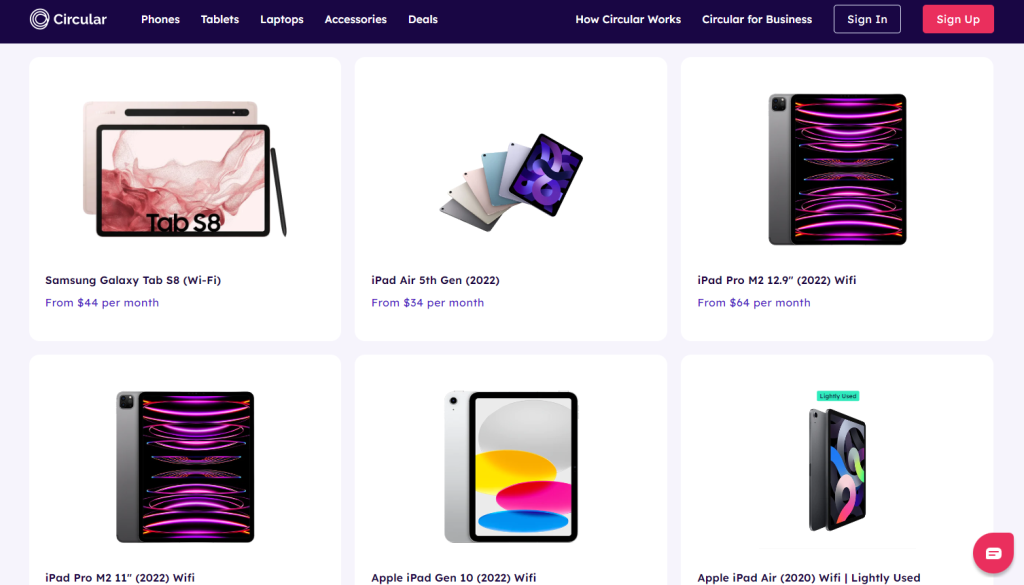
The absence of lock-in contracts (other than the selected lock-in period) and the convenience of Circular’s subscription model attracted many during its launch in both Singapore and Australia. However, Nick admitted that this traction was initially driven by curiosity.
Today, the brand increasingly finds budget-conscious customers tapping onto Circular as an alternative way to access tech products.
On the consumer side, the brand appeals to budget-conscious young professionals who value monthly budgeting and immediate access to the latest technology without the commitment of ownership. Families also choose Circular for engaging their children with educational entertainment content, while benefiting from its damage cover offering.
Meanwhile, its B2B arm, Circular for Business, sees demand from SMEs and startups that prioritise cash flow.
Much of this goes back to Circular’s value proposition of subscribers only paying for the products they use, and returning the ones they don’t. Many returning customers today understand that Circular can help them be smarter with their money and the planet in a hassle-free way.
– Nick Ramsay, CEO and co-founder of Circular
Debunking Singaporeans’ mindsets on refurbished devices

Despite the traction Circular has garnered with its subscription model, the brand faces its fair share of challenges. A significant portion of these challenges revolve around dispelling myths and the prevailing “ownership” mindset when it comes to purchasing tech devices among Singaporeans.
What we usually hear is that Singaporeans would rather purchase their tech device upfront to recoup some of the money back later on, but more often than not, the device ends up at the back of their closets and is sold for scrap.
– Nick Ramsay, CEO and co-founder of Circular
This often happens because consumers usually underestimate the cost of depreciation for mobile phones and other electronic devices. Moreover, they often overlook unforeseen expenses resulting from accidental damage, especially in the absence of gadget insurance.
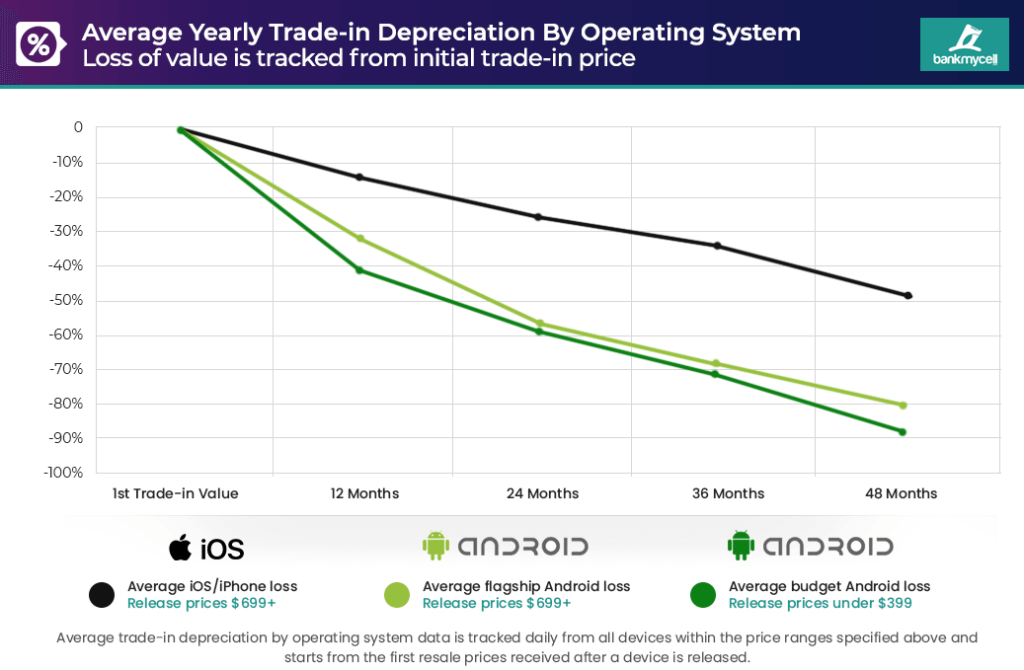
To overcome this inertia and ingrained mindset, Circular’s team has doubled down on their efforts to communicate the importance of access over ownership, while reducing the collective burden on the environment.
In addition to the prevailing ownership mindset, altering the perception of refurbished appliances and overcoming the “ick factor” associated with these devices have also proved to be a significant challenge. In fact, only a small percentage of tech devices end up seeing a second owner.
Hence, Circular has partnered with “industry-leading specialists” that adhere to “strict standards” to ensure that devices undergo a thorough refurbishment process. This includes a data-wipe, testing for software and hardware functionality, damage inspections, replacements for wear and tear,
as well as a thorough cleaning and sanitation.
Although our refurbished devices are graded either ‘like new’ or ‘lightly used’, most customers have shared that they cannot tell that it’s refurbished!
– Nick Ramsay, CEO and co-founder of Circular
Circular aims to get about six cycles of uses per device through their “extended lives” after refurbishment. Once a device can no longer be rented out, it would be safely recycled.
Circular’s revenue and subscriptions have grown tenfold the past year
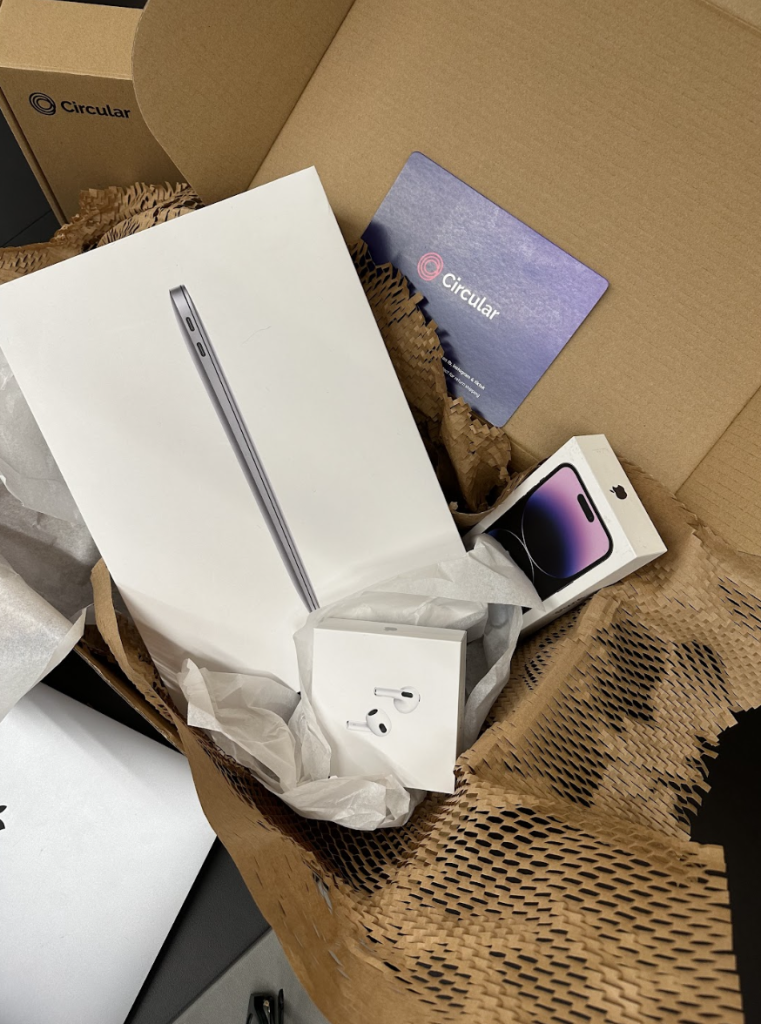
Since its launch, Circular has successfully closed two funding rounds, which have been backed by prominent investors including Y Combinator. It has also successfully entered Australia in November last year, just nine months after its launch in Singapore.
In the last year, the business’ revenue and subscription numbers have both grown tenfold. Moreover, its B2B arm has also seen an 80 per cent increase in demand in the first quarter of 2023, as compared to the end of 2022.
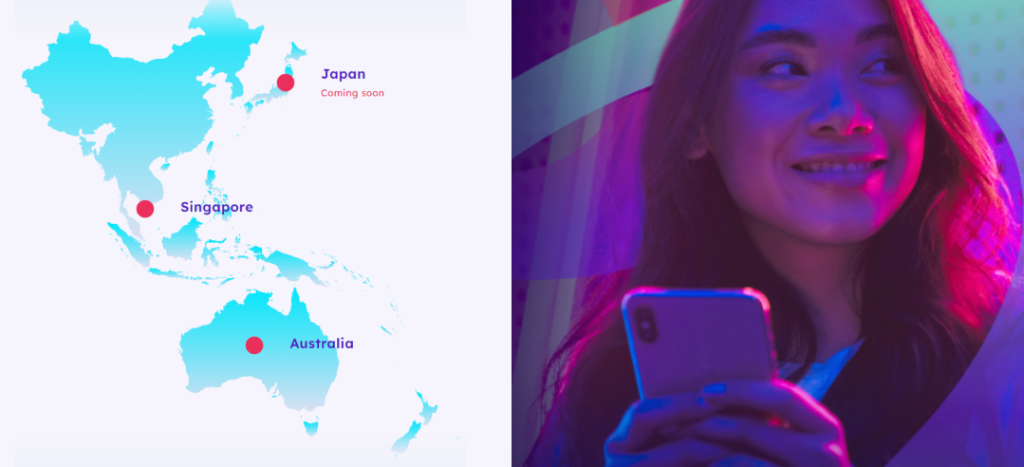
Moving forward, Circular aims to further expand its market presence and enhance brand recognition in Singapore and Australia. The company also has ambitious plans to extend its reach to other regions, including New Zealand, Japan, and South Korea.
Ultimately, Circular’s ultimate objective is to accelerate the adoption of the circular economy by establishing subscriptions as the optimal method for accessing and experiencing technology.
Featured Image Credit: Circular
Also Read: This S’porean startup is fighting fashion waste with lab-grown leather
Unlocking convenience: FedEx on why parcel lockers will be the future of delivery in S’pore
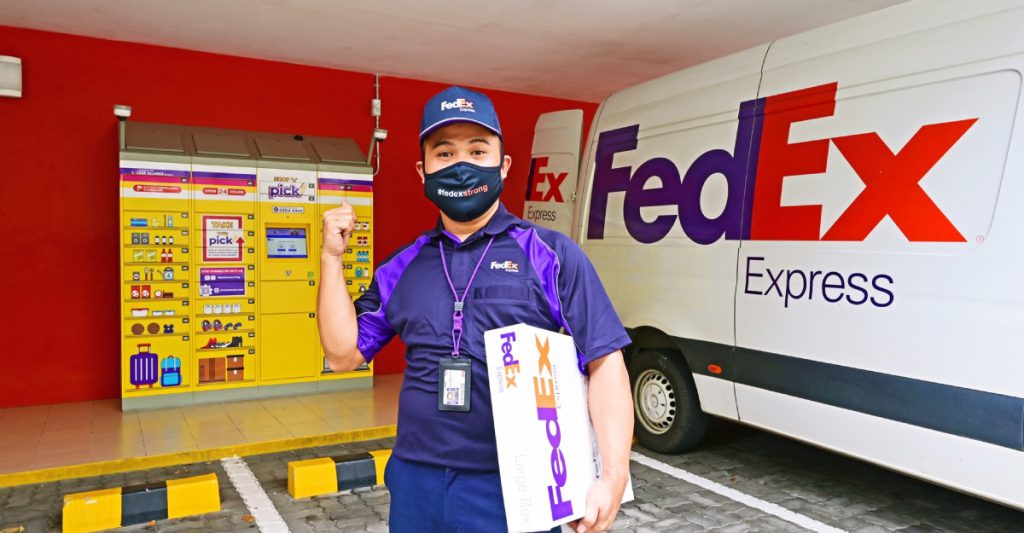
Over the past three years, COVID-19 brought about more home-centric lifestyles and has accelerated the shift from offline to online, causing a growth in the digital consumer population in Singapore.
On average, Singaporeans utilise about 10 online platforms to shop, and around 97 per cent of all Internet users in Singapore have made at least one online purchase, helping the e-commerce industry in Singapore to thrive.
The flourishing e-commerce industry has provided vast opportunities to key players in the industry, such as logistics providers who have seen a surge in demand for parcel deliveries. In fact, more than 200,000 parcels are being delivered daily in Singapore.
However, the surge in demand for parcel deliveries is also posing new challenges for logistics providers, as consumers increasingly expect quick and seamless order fulfillment.
To meet these changing consumer expectations, logistics companies have had to explore innovative solutions such as parcel lockers.
By integrating parcel lockers into their delivery solutions, logistics companies can offer an efficient and effective alternative to the traditional home delivery services.
Addressing the demand for seamless parcel delivery
One such company that has pivoted to provide parcel locker delivery services is FedEx.
The international courier has teamed up with Pick Network, a subsidiary of Infocomm Media Development Authority (IMDA), to provide parcel locker delivery services to its customers.
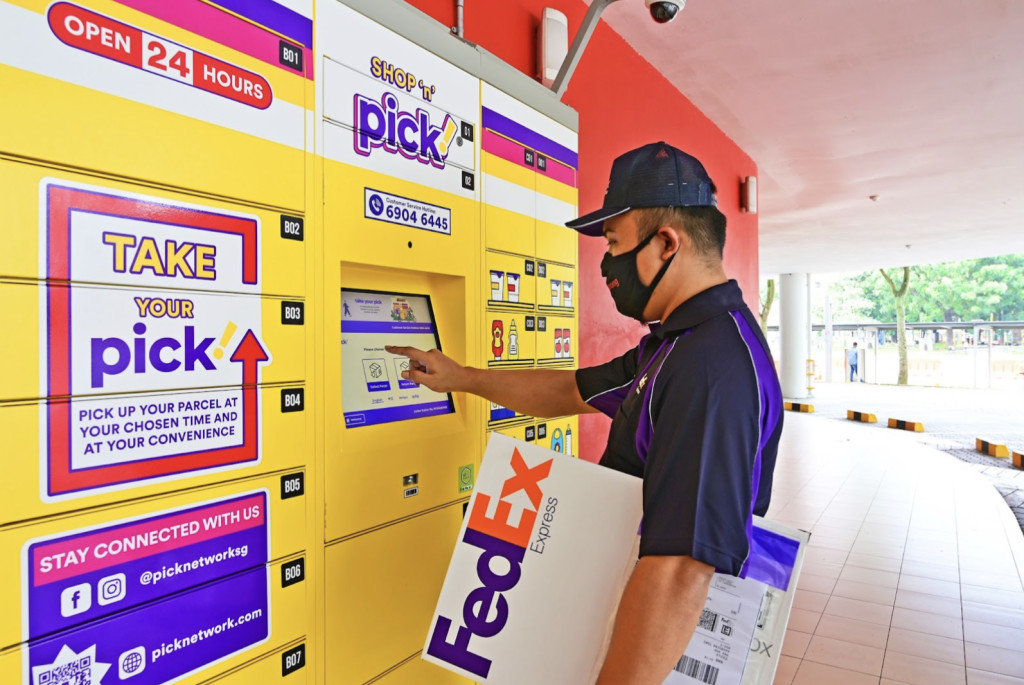
Launched in April 2021, Pick deploys, owns and operates the nationwide parcel locker network across Singapore.
FedEx and Pick share similar values in providing reliable, efficient and innovative solutions to customers. By aggregating deliveries to a consolidated locker location instead of individual doorsteps, we are able to experience productivity gains and increased cost savings.
– Eric Tan, Managing Director, FedEx Express Singapore
In addition to providing a secure location for customers to retrieve parcels at their convenience, parcel lockers also play a crucial role in improving the delivery process for logistics companies. Couriers are now able to drop off multiple parcels at one convenient location – improving productivity by saving time and costs.
Enhancing customer convenience with parcel lockers
According to Eric, Pick’s extensive network of over 1,000 lockers in various locations across the country – including all HDB estates, MRT stations, bus interchanges and community clubs – has helped FedEx offer its customers greater convenience and flexibility in receiving their parcels as the lockers are operational 24/7.
FedEx customers often opt for Pick lockers as their preferred method of receiving packages because they are easy to use and convenient.
There are two ways for any FedEx customer to collect their parcels from a Pick locker. Firstly, customers can log into FedEx Delivery Manager online to indicate their preference for all future parcels to be delivered to their preferred Pick locker.
Alternatively, in areas where FedEx has already adopted Pick lockers, customers will receive an SMS from FedEx on the day of delivery, informing them that their parcel will be delivered to their nearby Pick locker unless they choose to opt out.
Subsequently, they will receive an SMS from L-Alliance (Locker Alliance) with a PIN code to retrieve their parcel at a time that best suits them.

For Patrick Tan, a FedEx customer and avid user of the Pick lockers, he found this parcel collection option to be very convenient as he does not need to worry about rescheduling or having someone at home to help receive his parcels whenever he isn’t available.
As a small e-commerce business owner, he often purchases small parts online, which are automatically sent to the nearest Pick locker below his block whenever he can’t physically collect his parcels. This eliminates the chances of missed deliveries and frees up more time for him as he doesn’t have to wait idly for his delivery to arrive.
“I no longer have to worry about rearranging for another delivery time if the courier misses me at home,” said Patrick, adding that parcel lockers are a great option for customers like himself who receive plenty of deliveries.
“Even during shopping festivals when parcel traffic is high, I have been able to collect my parcels on time. The entire process is straightforward and has been made a lot more convenient and accessible with Pick lockers.”
Streamlining courier efficiency and productivity
Aside from providing convenience to its customers, FedEx has also brought a plethora of advantages to its diligent couriers through Pick’s locker system.
Prior to the collaboration, FedEx couriers would typically deliver packages directly to the customer’s doorstep. However, a common issue that may arise is the rescheduling of deliveries, which typically occurs when recipients are not available to receive their packages at the time of delivery.
In such cases, I would first check with the customer if they have any preferred alternative delivery options, such as leaving the package with a trusted neighbour, or if it was a condominium, at the security booth or management office. If that is not possible, we would schedule a second delivery attempt at a convenient time for the customer.
– Iskandariah Hussin, Senior Courier, FedEx Express Singapore
A second delivery attempt is required approximately three out of 10 times for home deliveries, and this means that Iskandariah has to make multiple trips to the same location.

With the implementation of the Pick locker option, Iskandariah finds that his usual delivery routine has been significantly refined.
For example, since almost all Pick lockers are located on the ground floor, Iskandariah does not have to perform doorstep visits up a HDB block to complete his delivery. The senior courier also sees an improvement in his productivity as he can deliver multiple packages to a single location, reducing the time taken for deliveries.
Another senior FedEx courier shared that he was able to cover eight addresses in approximately 45 minutes, as compared to the previous one hour for four addresses, with the option to deliver parcels to a Pick location.
Additionally, Iskandariah said that he benefits from savings on fuel and parking expenses since he travels shorter distances to complete the deliveries, which in turn effectively reduces his carbon footprint and time spent on the road.
Rise of parcel lockers is shaping the future of e-commerce logistics
During the initial trial period, FedEx adopted 40 per cent of Pick lockers and the take-up rate has been impressive, with 70 to 80 per cent of consumers choosing to collect their parcels from Pick lockers instead of home delivery.
Following this successful trial, FedEx has now chosen locker delivery as its primary delivery mode in Singapore.
We expect utilisation rate to continue to increase as public awareness on the convenience and security is on the rise. FedEx remains committed to providing our customers with convenient, efficient and safe delivery options.
– Eric Tan, Managing Director, FedEx Express Singapore

While locker service adoption is still in its early stages in Singapore, FedEx believes that this delivery option can offer a multitude of benefits in the broader context of e-commerce logistics.
This includes faster and more secure deliveries while reducing impact on the environment and improving customer experience with added convenience.
Pick Network’s CEO, New Soon Tee, echoes this sentiment. “Pick operates the nationwide locker infrastructure to bring greater convenience to consumers and improve the working conditions for couriers. We are glad to play a part in transforming the last mile delivery sector with FedEx,” he said.
The use of parcel lockers is an innovative solution that can disrupt the logistics industry in Singapore, which is currently grappling with delivery inefficiencies such as manpower challenges, costly overheads, and the need for timely delivery.
As parcel lockers become more widespread, they are likely to become an essential component of the e-commerce logistics ecosystem, revolutionising the way that e-commerce companies approach last-mile delivery and customer service.
In the future, there is also a possibility that parcel lockers may evolve beyond package delivery to offer additional services like returns, first-mile sending of parcels, and click-and-collect, which could provide even greater benefits to consumers, businesses, and couriers.
Featured Image Credit: FedEx
Also Read: Growing against the odds: How City Sprouts builds communities through green spaces, programmes
To highlight M’sian cacao, this chocolatier in KL partners with award-winning local farms
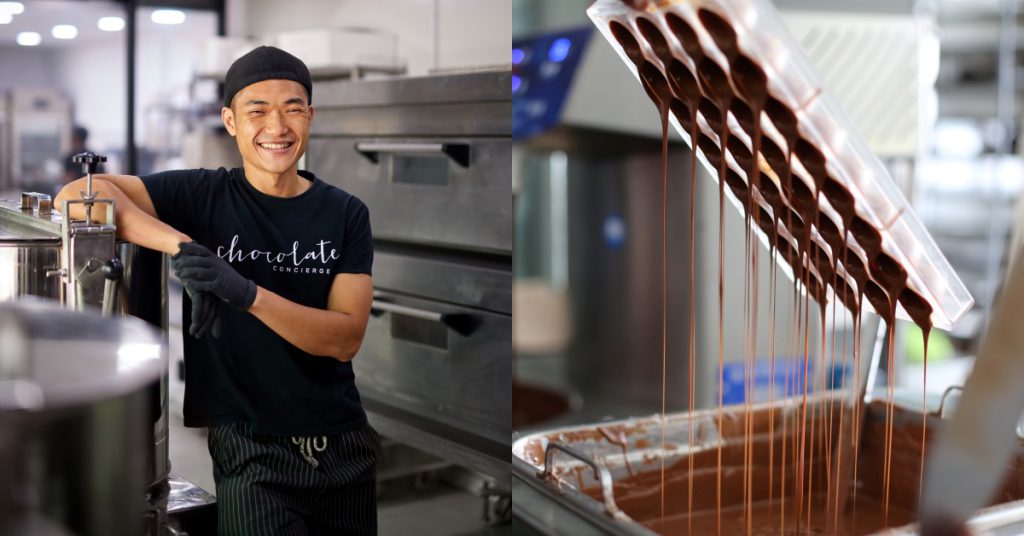
Think “cocoa” and you’d think of beans that come from regions such as Brazil, Ghana, and Indonesia. Not many of us know that Malaysia is actually a country that has a fairly decent production of cocoa beans. In fact, Malaysia is actually among the top cocoa producers in Asia.
Part of the reason why we may not know this could be because not many brands allow for complete traceability or transparency in where they source their beans from.
So, Chocolate Concierge has turned this into one of its core pillars. The icon in the Malaysian chocolatier scene is known for its shop in Bangsar Shopping Centre and its focus on highlighting cacao of Malaysian origins.
A pretty sweet start
In an interview with Vulcan Post, Ning, the founder of Chocolate Concierge, recalled how he had ended up making chocolate.
The former application developer was involved in various educational, publication, and financial service startups previously. Although he didn’t have much experience in the food industry then, he was curious enough to venture into it.
“I have always been fascinated by the intricacies of flavours of fermented foods, such as chocolate,” he explained.
Ning shared that Chocolate Concierge was created to fulfil his curiosity about how chocolate made from Malaysian cocoa beans would taste.
“Not being able to scratch that itch was what pushed me into making chocolate from scratch on that fateful day,” expressed Ning.
The next thing he knew, he was making one-and-a-half kilograms of chocolate from scratch at home, and he was now a chocolatier.
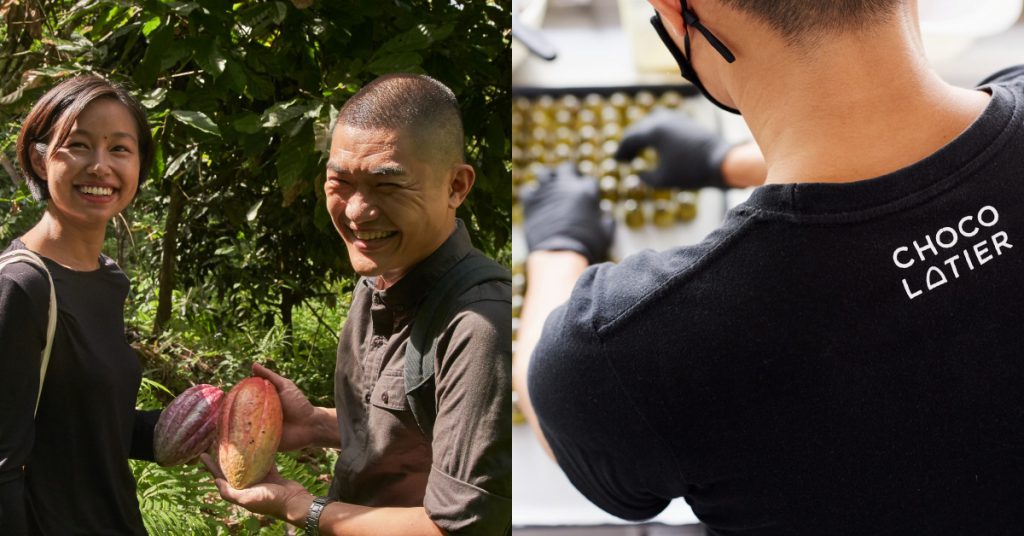
As Malaysia has the ideal climate and fertile soil to grow cocoa beans, he reached out to several farms and went on a quest to get his hands on some local cocoa beans.
With a total startup capital of under RM100,000, Ning went on to establish Chocolate Concierge.
From bean to bar
Ning stated that he chose to work closely with indigenous communities to source cocoa beans that are local and grown in biodiverse environments.
“It is my belief that by preserving the unique flavours and qualities of each origin, we can showcase the true potential of Malaysian cocoa,” he said.
As of now, Chocolate Concierge sources cocoa beans from farms across several states, each one representing a different farming method, geography, and climate, ultimately lending unique flavours to the chocolates.
Some of the farms they source from are in Kelantan, Johor, Sabah, Pahang, and even KL itself, each with its own uniqueness.
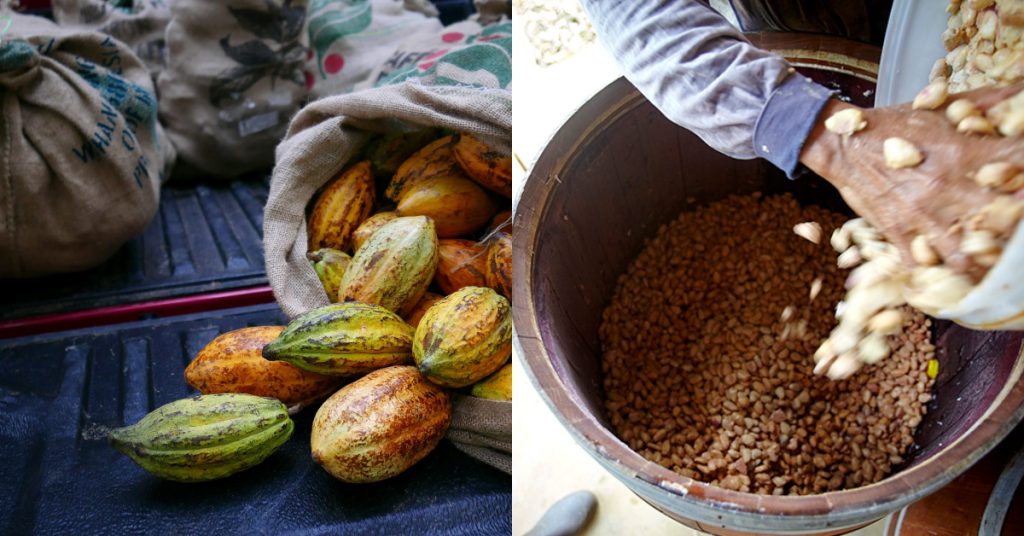
Each origin is location-based, except for some whereby they work with the indigenous community, which are the Semai, Temuan, and Temiar.
“In those cases, the credit goes to the community rather than the location, because this is a way for their plight and existence to gain mainstream awareness.”
The Semai and Kelantan Origins won two cacao excellence awards from the Agency for the Valorisation of Agricultural Products (AVPA) Paris Gourmet in 2023.
Uplifting communities with cocoa
The process begins with Chocolate Concierge’s relationship with the community. “We prioritise working directly with these farmers to ensure fair trade practices and support their livelihoods,” Ning said.
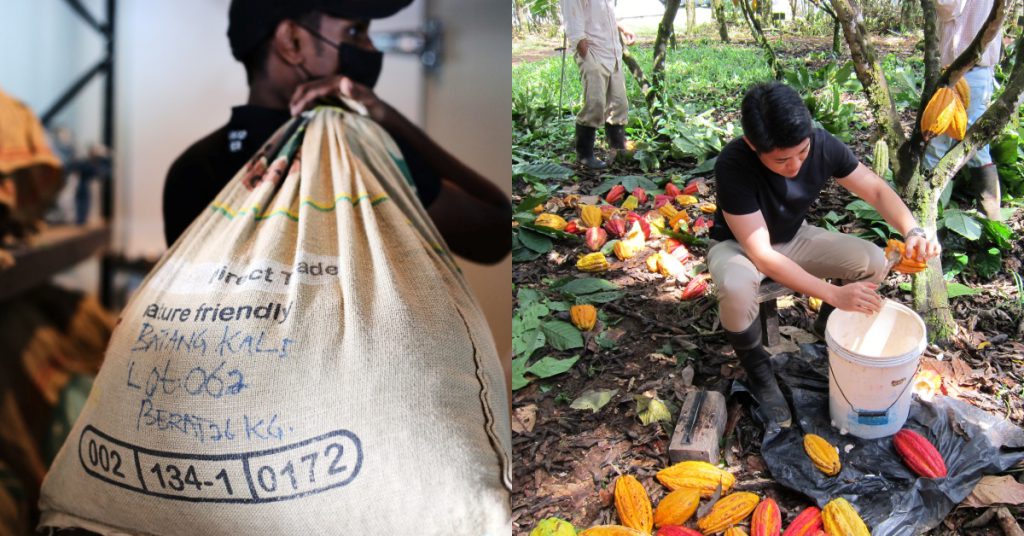
They harvest fresh cacao from the areas surrounding the settlement and the fresh beans are transported to Chocolate Concierge’s cacao farm in Raub.
The beans are then carefully sorted and fermented typically for six days. After fermentation, the beans are sun-dried on bamboo-surfaced tables in a greenhouse.
Once dried, the cocoa beans are transported to their chocolate lab, where they are roasted to enhance their flavours and remove any moisture.
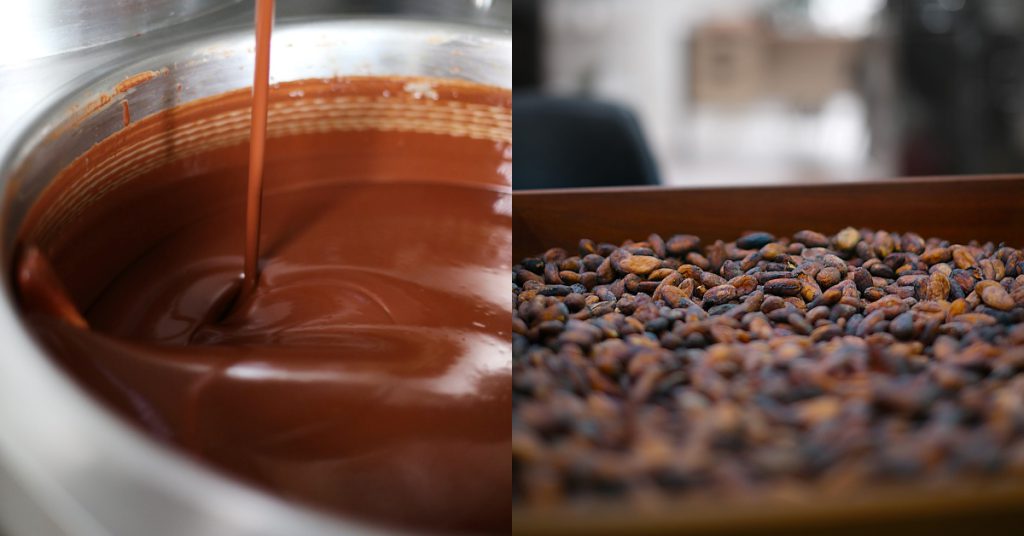
The roasted beans then go through the process of grinding and refining before transforming into the smooth and velvety chocolate we know of.
“We carefully temper the chocolate to ensure optimal texture, shine, and stability. From there, the chocolate is moulded into bars, truffles, bonbons, or other delightful confections by our skilled chocolatiers.”
The chocolate is sold through various channels including their retail outlet, online platform, and partnerships with select restaurants and cafes.
Throughout this entire “tree to bar” process, Ning said that they do not blend origins, which further upholds their commitment to traceability, quality, and sustainability.
Letting creativity run wild
If you were to take a look at their website, you’d notice that besides the usual offerings of milk, dark, and white chocolate, Chocolate Concierge also has interesting flavours such as Coffee Banana, Sweet Laksa, Teh Tarik, and Peanut Butter Toast.
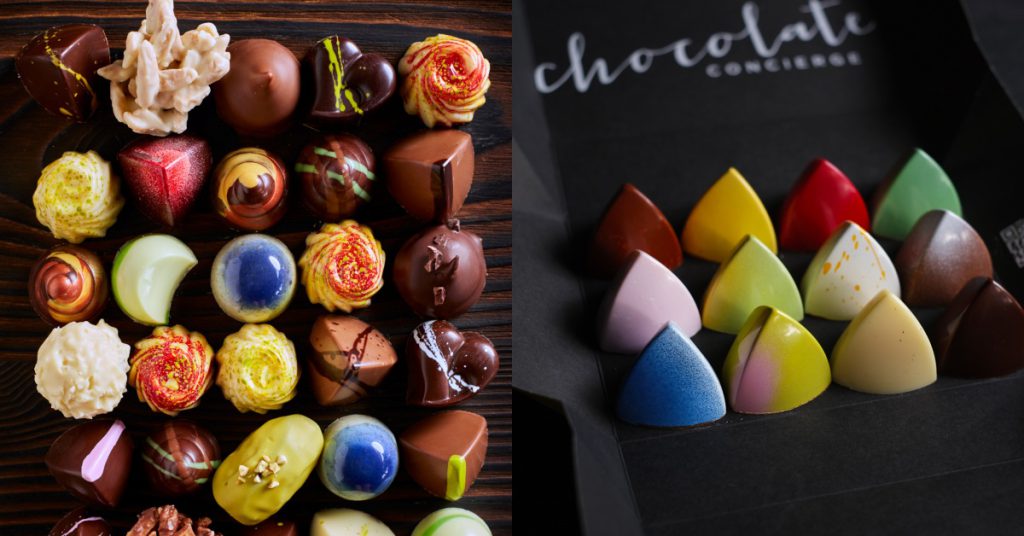
He explained that their recent Raya recipes for kuih talam, ros, and karipap were inspired by traditional kuihs.
“We constantly sample our creations to ensure that the flavours are not just reminiscent of the kuih they represent, but that it also works well with our chocolate,” said Ning.
To Ning, creating unique chocolate combinations is part science and part art.
“The R&D process could take a short time, as we sometimes nail it within three iterations, or it could be years, where an idea is brewing and we put it aside, only to revisit it when certain ingredients return.”
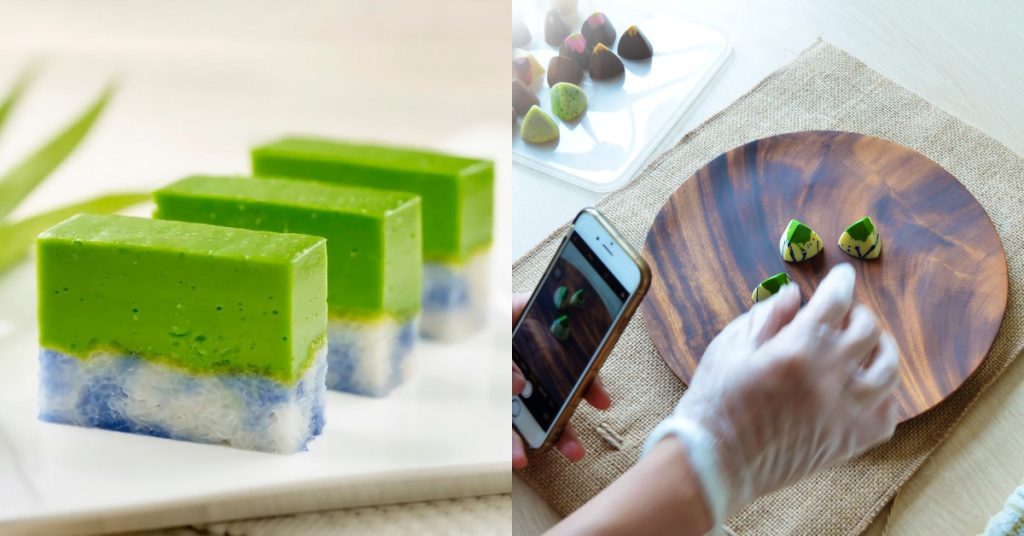
Their current operation consists of 20 dedicated members focusing on business development, customer experience, food safety, halal compliance, and customer service.
They also have a dedicated team working diligently at their chocolate lab, meticulously crafting their signature chocolates and constantly experimenting with new flavours and techniques.
“We produce between 200 to 500kg [of chocolate] a week. Most of our production goes to support other F&B businesses such as in hot chocolate, souffles, pain au chocolat, and donuts,” said Ning.
“We are still on a growth trajectory, revenue in our last financial year was under RM3 million. We are grateful to have survived through COVID-19 without having to let anyone go, or take on any additional debt.”
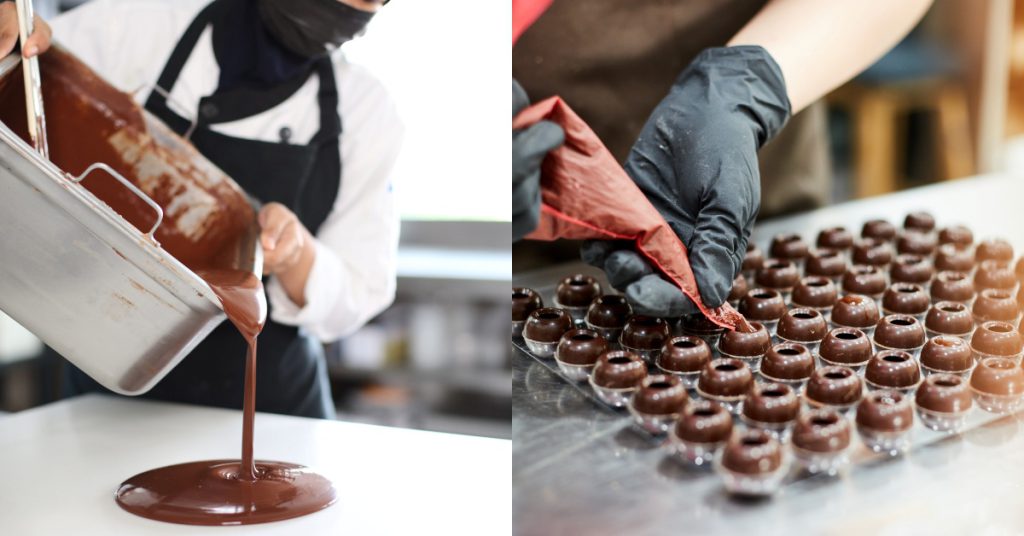
A not-so-sweet problem
Despite doing what he loves, Ning admitted that sourcing cocoa beans locally has its share of challenges and limitations.
One major challenge is the limited scale of local cocoa farming.
“Malaysia has lost almost all of its cocoa farms, mainly to palm oil plantations. Only the most resilient farmers have not given up.”
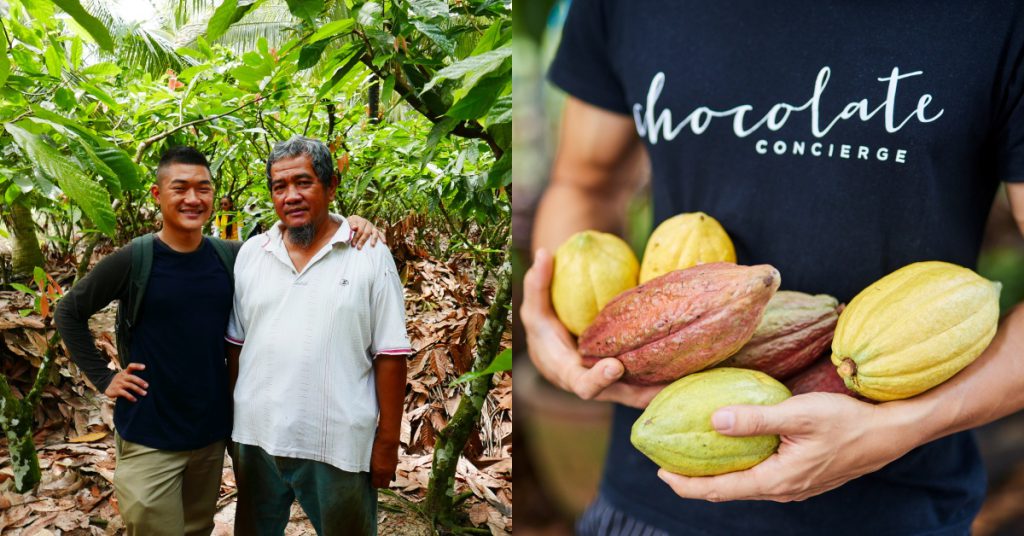
This leads to a smaller pool of farmers cultivating cocoa and in turn, affects the availability and consistency of supply.
Additionally, Ning believes that there is a lack of awareness and appreciation for single-origin chocolate which sometimes limits the potential market for their products.
Despite these challenges, Ning remains dedicated to crafting single-origin Malaysian chocolate and plans to expand their product line by working on a range of new and innovative recipes.
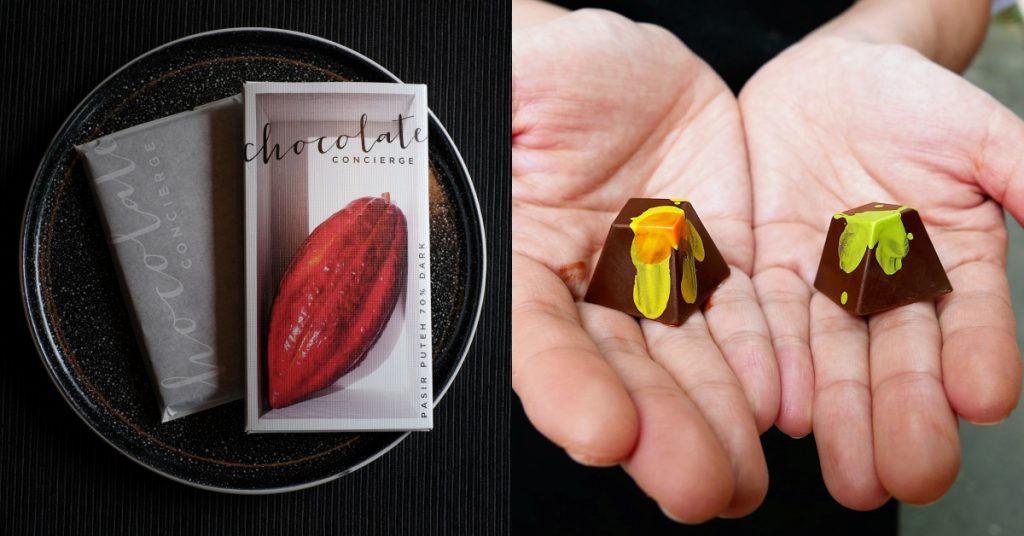
In the long term, Ning shared that they want to strengthen their presence on an international scale and enhance their sustainability efforts.
“I aim to share the beauty and richness of Malaysian single origin with chocolate lovers worldwide, and continue crafting exceptional chocolates that truly represent the heart and soul of Malaysia,” he concluded.
- Learn more about the Chocolate Concierge here.
- Read other articles we’ve written about Malaysian startups here.
Also Read: This M’sian brand has sustained itself with just one fizzy honey beverage for 6 years
Featured Image Credit: Chocolate Concierge
Crayon Data CRO believes not using AI could be an existential threat for companies
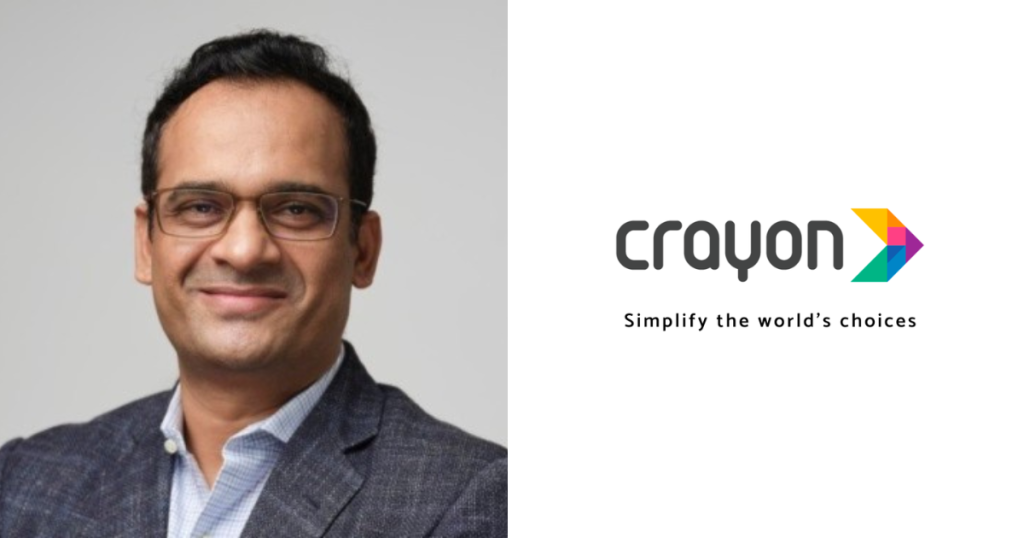
“Data is the new oil” – the famous quote by British mathematician Clive Humby has resonated well over the years.
Today, trillion-dollar companies such as Google and Amazon serve up perfect examples of just how valuable data can be. From targeted advertising to same-day deliveries, it is an integral part of some of the world’s biggest business models.
Data collection, in itself, makes up a huge market – one which is expected to grow by 25 per cent a year through till 2028. Most businesses, if not all, partake in this process, whether it’s through feedback forms or internet cookies.
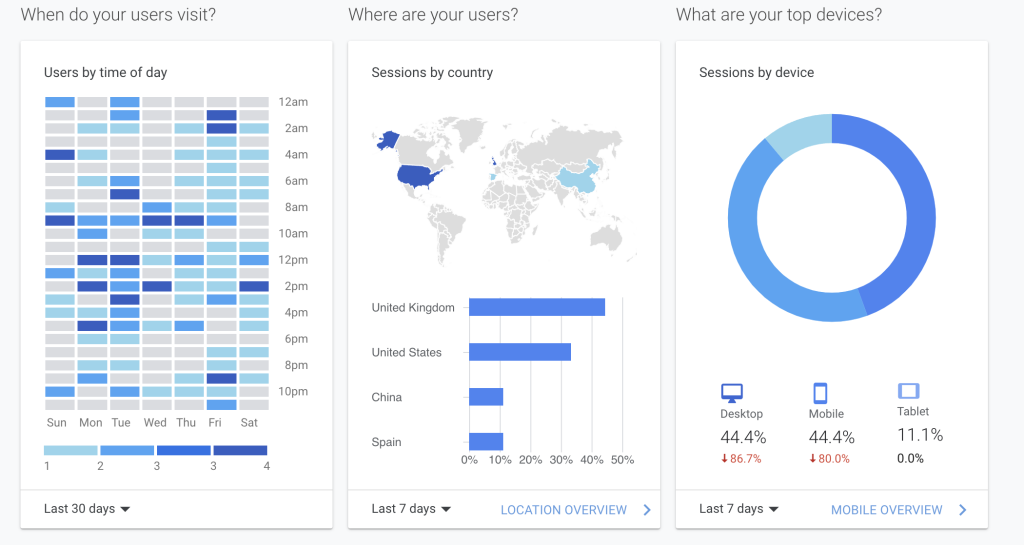
As this process has become cheaper and more efficient, it no longer imparts the same competitive advantage it once did. Take e-commerce businesses for example – they can all use Google Analytics for free and access customer demographics, sources of traffic, and more.
In order to gain an edge, companies need to do more. Now that the data’s available to everyone, it’s about who can make the best use of it.
This is where artificial intelligence (AI) and machine learning (ML) come into play. Systems can be trained to sift through large amounts of data, recognise patterns, and offer solutions.
Turning data into information
“When you apply for a credit card, banks send you a long list of offers. 90 per cent of those might be [irrelevant to you],” says Raju Bhupatiraju, Chief Revenue Officer of Crayon Data, a Singapore-based AI and big data company. “That’s called a spray-and-pray method.”
Banks present a wide variety of offers with the hope that a few might be enticing enough for potential customers. It’s an inefficient system which can often result in resource wastage.
AI offers solutions to tidy up this process, using data which banks already have access to. For example, spending habits can help determine the type of offers which someone might be interested in. “What Crayon Data does is use AI and ML to try and understand customer tastes,” Bhupatiraju says.

Using a variety of data points, AI systems can recognise patterns and suggest the best course of action. A person who often spends at vegan restaurants may not be interested in vouchers for a steakhouse, while someone who goes for weekly massages might appreciate spa discounts.
The inferences may not be extraordinary, nor will they always be right – but where AI stands out is in the speed at which it can go through data and come to such conclusions. “Pattern recognition is something humans can do but it’d take a lot longer. A system can take care of 80 per cent of it.”
Using AI and ML systems, Crayon Data is able to offer a variety of solutions, tackling problems involving revenue generation, cost-cutting, and customer experience.
For example, travel industry players such as airlines and hotels, might benefit from Crayon Data’s capability to curate highly personalised itineraries. By understanding tastes and preferences, companies could enjoy a greater share of their consumers’ travel budget.
Working with Crayon Data, a hotel could offer an app which recommends the ideal restaurants and tourist attractions for each guest. Guests would save time planning their trip and enjoy the convenience of booking their entire itinerary from a single app.
Consequently, the hotel would reap benefits in the form of commissions and an improved overall guest experience.
Such solutions are applicable across most industries, whether it’s travel, healthcare, banking, or education. Data analysis using AI can be the key to better conversion rates and more efficient operations.
How will AI impact the world?
Ever since generative AI took the spotlight with the launch of ChatGPT, AI technology as a whole has benefited from more interest and funding. Around the world, companies are showing more willingness to make use of such systems.
“AI is an orbit shifter,” Bhupatiraju says, adding that companies which opt out of using the technology could face an existential threat. “It’d be like riding a bicycle when everyone else has a motorbike. You could have the best bicycle, but that wouldn’t make a difference.”
Bhupatiraju explains that AI has the potential to bring about change in a non-linear fashion. “You can enjoy double the benefits without having to double your investment.”
Today, a startup can use generative AI tools for branding and copywriting. Chatbots can replace human customer support and AI analytics tools can help improve the results from targeted advertising. All put together, the initial investment to set up a business — whether it’s a travel agency or an e-commerce store — is brought down significantly.
With data solutions such as those offered by Crayon Data, “a four to 10 times benefit is common,” he adds. There’s a lot of time and money to be saved by delegating work to the machines.
That being said, what happens to the employees who were once responsible for said work? As AI takes over job roles, questions of job security have become prevalent across a number of professions. Copywriters face competition from ChatGPT while artists try to keep up with Midjourney.
Bhupatiraju believes that despite this, there’ll be jobs around for those who want them. “People overall will not lose jobs, unless they’re unwilling to change.”
As AI takes over mechanical work, there’ll be more time for humans to spend on jobs that require critical thinking and reasoning. This will require retraining and reskilling — an investment decision that will fall upon companies and governments, but the need for humans in the workplace will remain.
Which countries are leading the way?
As is the case with most innovations, their impact is determined not only by businesses, but policymakers as well. There’s a continuous need to find balance and ensure that new technologies are rendering a net positive effect.
Earlier this year, Italy became the first Western country to ban ChatGPT, claiming that the program didn’t comply with Europe’s General Data Protection Regulations (GDPR). Given their heavy use of user data, AI tools – especially ones as popular as ChatGPT – could pose a great threat if hacked or breached.
As AI technology develops, such considerations become more and more important for regulators to address. “It’s important for AI to grow responsibly,” Bhupatiraju says. “Regulations will definitely evolve.”
With this in mind, companies need to be careful about where they choose to operate, lest they be blindsided by new policies. After starting off in Singapore back in 2012, Crayon Data is now exploring growth opportunities in Dubai and the Middle East as well.
Bhupatiraju looks at it as a question of willingness and readiness. On one hand, governments and the local clientele need to show an interest in AI-based systems. “[Some countries] simply have bigger problems to solve.”
Along with that, there’s a need to have the knowledge and capital — among other factors — in place to actually implement such solutions.
In addition, it’s also necessary to consider the social impact which AI could have on a region. “Southeast Asia and the Middle East roughly have the same GDP, but the population in Southeast Asia (SEA) is around 50 per cent higher,” Bhupatiraju says.
As such, AI solutions can be introduced in the Middle East without a significant impact to the country’s workforce. On the other hand, retrenchments are a lot more likely in SEA in the short run. The emergence of AI calls for significant investments to retrain workers and create new job opportunities.
Featured Image Credit: Crayon Data
Also Read: How this S’pore AI startup is transforming the marketing sector by automating content creation

